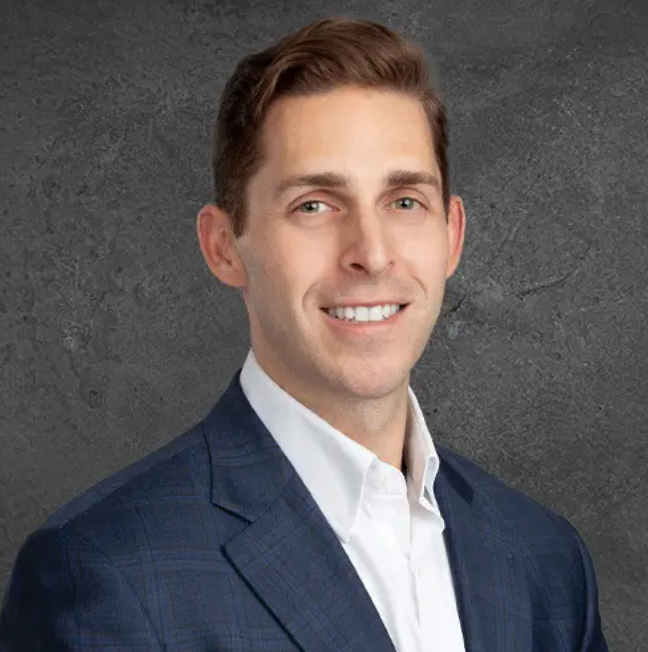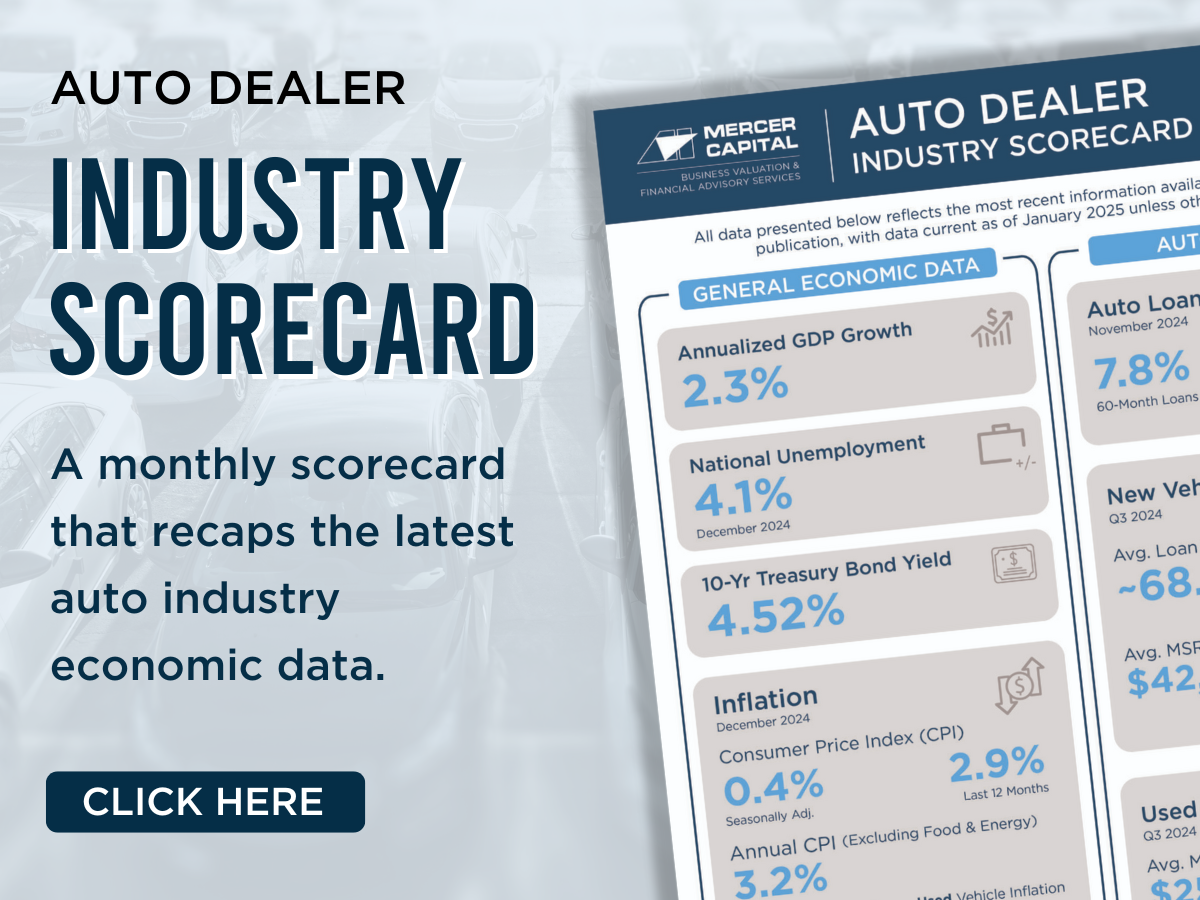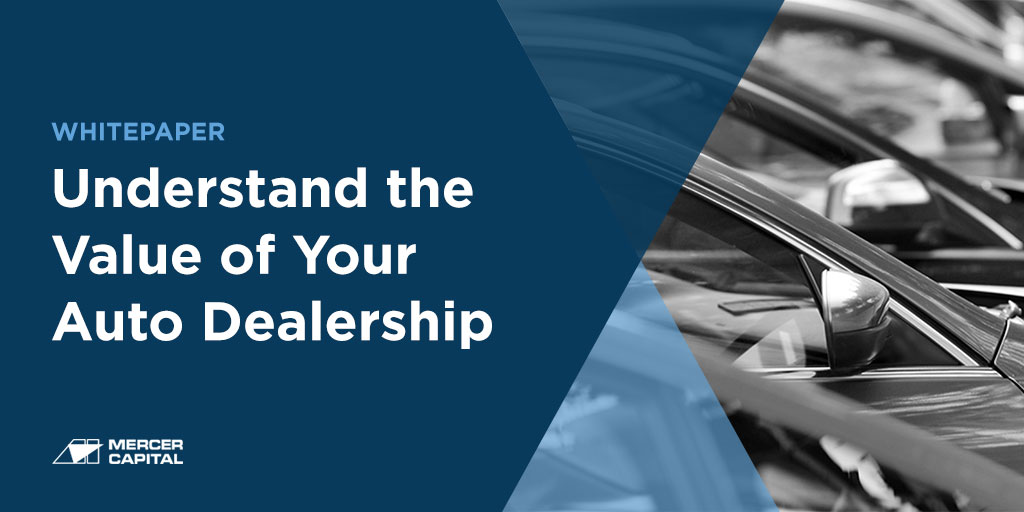Understanding Reinsurance for Auto Dealers (Part II)
Valuation and Planning Considerations
Key Takeaways
-
- Different entities, different valuation lenses: Core dealership operations, underlying real estate, and reinsurance entities have distinct earnings drivers and risk/return profiles—so they warrant different valuation considerations. Net asset value is particularly useful for reinsurance and real estate, whereas core operations are typically valued via income or market methods.
- Earning power hinges on underwriting, capital, and risk: A reinsurance captive’s earnings depend on normalized underwriting profits, the split between required reserves and excess distributable capital, and the volatility of claims, among other factors.
- Strategic planning and deal flexibility: Captives formed as CFCs can enhance tax efficiency, facilitate estate/succession planning (via entity structuring or minority transfers), and provide creative buy-sell financing options (e.g., premium funneling or writing agreements).
In Part 1 of this series, we introduced reinsurance in an auto dealership context, explaining what it is, how it works, and the potential benefits (and drawbacks) to dealers. In this post, we’ll discuss the valuation implications of reinsurance on auto group corporate planning and ownership estate planning options, and contrast them to core dealership operations as well as the real estate owned by the auto group.
For valuation analysts, reinsurance companies can represent a significant yet often misunderstood component of a dealership’s financial picture. Analysts evaluating auto dealer groups must understand how the captive interacts with the dealership’s overall economics.
Different Earnings Streams, Different Risk Profiles
When dealers elect to start a captive reinsurance company, they typically form a distinct entity in a tax-advantaged domicile, commonly referred to as a controlled foreign corporation (“CFC”). Utilizing a CFC is highly tax-efficient (no tax on underwriting profits) and segregates risk away from the dealership entity. Further, this separation provides flexibility in estate planning and buy-sell transactions while creating a separate source of liquidity for dealer principals who are acquisitive or may have other investment needs.
The entity structure of a reinsurance company is not unlike that of a real estate holding company, which commonly owns the land and building from which the dealership operates. From a valuation standpoint, these three entities have meaningfully different operations and risk/return profiles.
The core earning power of auto dealerships’ operations fluctuates with a myriad of factors. A few of these are:
- Volume of vehicles sold
- Pricing power and gross margin dynamics
- Ability to retain customers and drive activity to after-sales
- Ability to control semi-fixed and fixed costs
For a real estate holding company, some factors include:
- Buyer interest in real estate in the local market
- Financing (or macroeconomic) conditions
For a reinsurance company, some factors include:
- Frequency and severity of insured losses (catastrophes, large claims, volatility of underlying risks)
- Pricing discipline and adequacy of underwriting (ability to set rates that reflect true risk)
- Investment returns on reserves and capital (since reinsurers hold a large float that drives earnings power)
Considerations in How to Value an Auto Dealer Reinsurance Company
We frequently discuss how to value auto dealerships in this blog. Blue sky, or intangible value, can be determined through either the income or market approach to valuation.
For real estate holding companies, the asset approach to valuation is used, which is basic math: assets – liabilities = equity. A real estate appraiser values the property, which is the primary input into the holding company’s valuation. There is no intangible value for real estate holding companies, as there is little reason for an investor to pay more than what the property is worth, net of other assets and liabilities. Because reinsurance entities are asset-intensive, net asset value is similarly useful for reinsurance and real estate entities, unlike core dealership operations.
Ultimately, an in-depth analysis of historical reinsurance performance is key to determining a reinsurance company’s value. These analyses typically take place in the context of a buy-sell transaction or estate planning work where parties are trying to determine the terminal value of the reinsurance company. For example, when a dealer is selling and exiting the business, they should question whether it is the right time to sell their reinsurance company, and the risk back to their administrator. This is known as a recapture offer. Critically, these recapture offers should be reviewed by an independent advisory firm specializing in reinsurance to ensure the offer is fair to both parties (oftentimes administrators will seek a large discount when acquiring the risk from the dealer).
A few important considerations when analyzing the earning power of a reinsurance company include:
- Earnings quality: Reinsurance profits depend on claims experience and sales volume. Analysts normalize earnings to separate sustainable underwriting profits from one-time gains
- Capital Structure: Captives accumulate reserves of capital. Analysts must distinguish between necessary reserves (claims obligations) and excess capital available for distribution
- Risk Profile: Higher-than-expected claims can erode profits. Valuations often incorporate a risk premium to reflect this volatility
Planning Opportunities and Creative Financing
We’ve discussed tax planning strategies for auto dealerships as they relate to real estate. Dealers can transfer interests in the real estate holding company to the next generation who is not involved in dealership operations without influencing daily operations. Similar strategies are available in reinsurance. Unlike real estate, which cannot easily be divided, we commonly see different reinsurance entities set up for future generations. This minimizes family strife, but it also relinquishes control, which some dealers may not prefer. For dealers who want to retain control of the reinsurance operations, transferring minority interests in a larger reinsurance entity rather than making distinct entities for each owner can be more efficient from a tax perspective.
We noted previously that a buyer of a store may just funnel reinsurance activity into their own captive. However, if the buyer does not already have their own store, reinsurance can be a creative way to finance the deal if the buyer cannot come up with the upfront capital to buy the dealership. By contractually agreeing to funnel reinsurance premiums until certain profit thresholds are met, the buyer can temporarily forego the additional profit center until they’ve satisfied their obligations to the seller.
Additionally, we are starting to see certain administrators advance large sums of money to dealers in exchange for the dealer to write a certain amount of business with the administrator, also known as a writing agreement. In other words, reinsurance entities can add optionality in deal structuring as dealers can include them in a sale, carve them out, or use them as a wealth transfer tool.
Conclusion
In Part 1, we showed why dealers pursue (or avoid) reinsurance. Part 2 demonstrated how captives affect valuation and estate/succession planning. For dealers, the decision to form a reinsurance entity should be informed not only by near-term profitability but also by the long-term role it can play.
Ignoring the reinsurance piece of an auto dealership operation can lead to undervaluing a dealer’s total economic picture. For estate planning, the captive may represent a substantial pool of retained earnings. For buy-sell transactions, the presence (or absence) of a reinsurance company can influence pricing and structure. For auto dealers, reinsurance is more than an ancillary profit center—it’s a strategic asset with significant valuation implications.
Mercer Capital provides business valuation and financial advisory services, and our auto team helps dealers, their partners, and family members understand the value of their business. Contact a member of the Mercer Capital auto dealership team today to learn more about the value of your dealership.
 |
We want to thank Jeff Alpert and his team at Composition Wealth who assisted us with this blog series.Jeff and his team take a fiduciary and administrator-agnostic approach to manage reinsurance premiums for dealers nationwide. He’s always on the road spreading the word about reinsurance benefits to dealers. If you want to learn more about implementation, loss ratios, etc., I recommend following Jeff on LinkedIn. |
 Auto Dealer Valuation Insights
Auto Dealer Valuation Insights 








